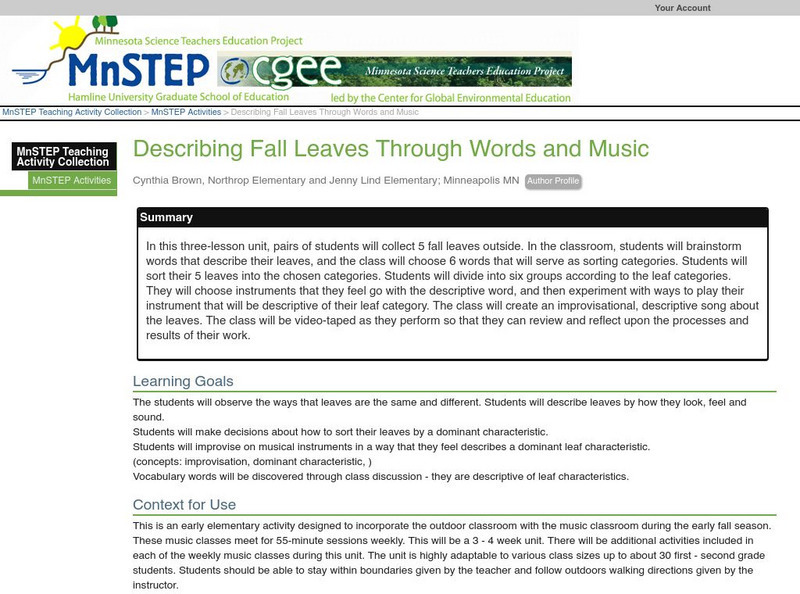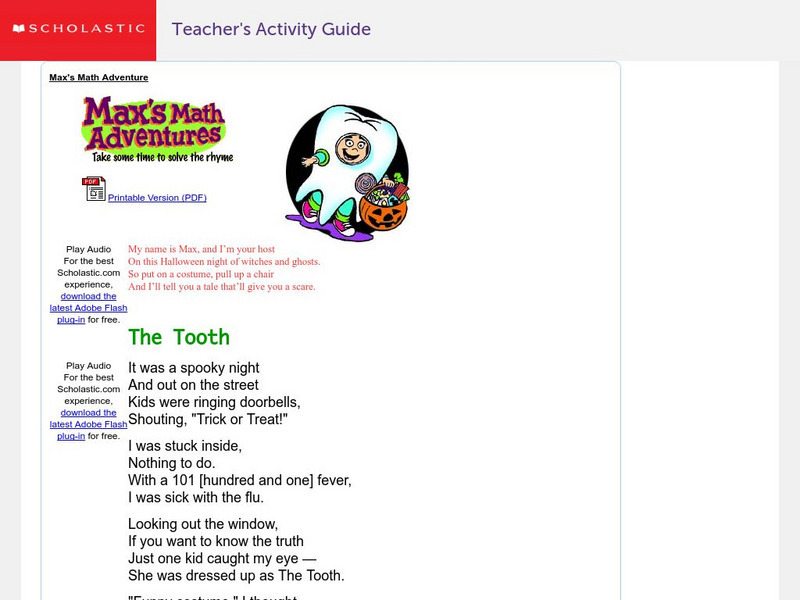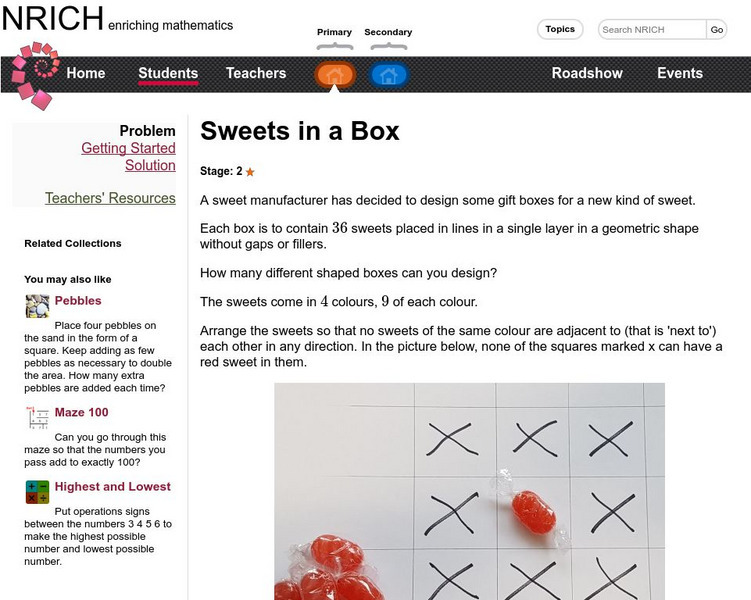CPALMS
Cpalms: Observable Properties of Matter
[Free Registration/Login Required] Students will sort objects according to their observable properties, such as size, shape, color, temperature (hot or cold), weight (heavy or light) and texture. Included are printable resources, a...
PBS
Pbs Mathline Lesson: Geometry, It's a Perfect Fit [Pdf]
This two-part geometry lesson plan has learners identify, describe, and classify two-dimensional shapes. Students engage in hands-on activities including identifying shapes in the classroom, creating patterns with shapes, identifying...
ABCya
Ab Cya: States of Matter
States of Matter is an educational activity for kids to learn about the different properties of matter. The lesson will introduce solids, liquids, and gases. Students will then be assessed through a sorting activity where they will...
Other
Sorico: Describing and Comparing Measurable Attributes
The following unit can be used to teach measurable attributes. Students will describe and compare two objects with a measurable concept in common using direct comparison. Included are necessary vocabulary, a scavenger hunt, and links to...
Science Education Resource Center at Carleton College
Serc: Describing Fall Leaves Through Words and Music
Students collect, describe, and sort leaves found outside. As a cross-curricular component, they will improvise on musical instruments in a way that they feel describes a dominant leaf characteristic.
Scholastic
Scholastic: Max's Math Adventures: The Tooth
Read this spooky rhyme and then use the activity page to create patterns with Halloween candy. The teacher's guide and extra challenges will help teachers make fun and interesting lesson plans.
University of Cambridge
University of Cambridge: Nrich: Sweets in a Box
Improve logic and pattern creation skills performing this game. Includes solution.
University of Regina (Canada)
University of Regina: Math Central: Lesson: Mr. Z's 5 Minute Game of Geometric Pandemonium
Students make a series of geometric drawings of points, obtuse angles, rays, polygons, and the like. Each child is given one but not allowed to show anyone else. The drawing is then taped to the back of the child in front of them. The...

![Pbs Mathline Lesson: Geometry, It's a Perfect Fit [Pdf] Lesson Plan Pbs Mathline Lesson: Geometry, It's a Perfect Fit [Pdf] Lesson Plan](https://d15y2dacu3jp90.cloudfront.net/images/attachment_defaults/resource/large/FPO-knovation.png)



